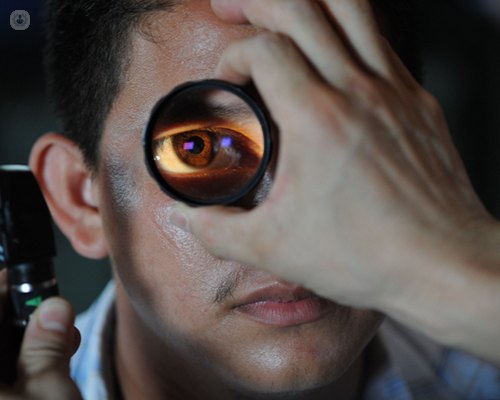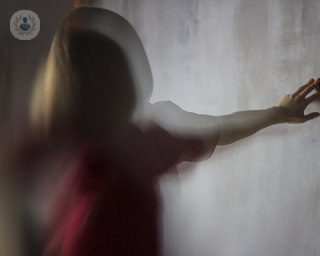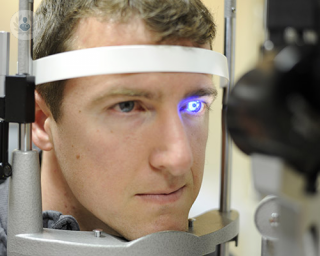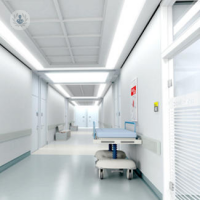Angle closure glaucoma
Ms Lina Osman - Ophthalmology
Created on: 04-28-2017
Updated on: 07-13-2023
Edited by: Karolyn Judge
What is angle-closure glaucoma?
Angle closure glaucoma is a serious condition that makes the pressure inside the eye rise suddenly, within a matter of hours. It is not as common as other types of glaucoma that cause pressure to build-up much more slowly over a longer period of time. The rapid increase in pressure inside the eye is called intraocular pressure.

What causes angle-closure glaucoma?
Acute angle-closure glaucoma is caused when the drainage in the eye is blocked because the iris has moved forward, closer to the cornea and caused the drainage angle to ‘close’ and eye pressure to rise. The system of canals that the eye fluid normally drains out of becomes completely blocked. The pressure that builds-up can damage the optic nerve. If the condition is not treated immediately and permanent damage occurs, it is known as primary angle-closure glaucoma.
What are the symptoms of angle-closure glaucoma?
Sometimes angle-closure glaucoma can have no symptoms and other times they can be very obvious. These may include:
- headaches
- eye pain
- nausea
- rainbows or halos around lights
- blurred vision
- pupils of different sizes
- sudden loss of sight
Who is most likely to get angle-closure glaucoma?
Women are more likely to develop the eye condition than men. It is also common in:
- people of Asian descent;
- those who are farsighted;
- have a family history of the disease, or;
- those who are in the age range of 55 to 65.
How is angle-closure glaucoma diagnosed?
Gonioscopy is method used to diagnose and monitor various eye conditions associated with glaucoma, such as angle-closure glaucoma.
It's painless and non-invasive. A goniolens is used together with a slit lamp or operating microscope to check the drainage angle of the eye. This method can differentiate between open and closed-angle glaucoma.
There are other methods that can diagnose angle-closure glaucoma. These include anterior segment optical coherence tomography (AS-OCT) and ultrasound biomicroscopy (UBM).
How is angle-closure glaucoma treated?
An eye specialist will try to get rid of some of the pressure in the eye when treating angle-closure glaucoma. They may do this using drops that narrow the pupil or with medication that lowers the amount of fluid that the eye makes.
Once the intraocular pressure has dropped, the ophthalmologist may use a laser to make a small hole in the iris to help the fluid start flowing inside the eye again. The doctor may also pull the edges of the iris away from the drainage canals.
The doctor will most likely treat both eyes, even if only one is affected, as it is better to be safe than sorry.
How can angle-closure glaucoma be prevented?
An angle-closure glaucoma attack can be prevented if the eyes are checked regularly at the opticians, especially if you are at high risk. This is to monitor the pressure levels and how well fluid rains.










